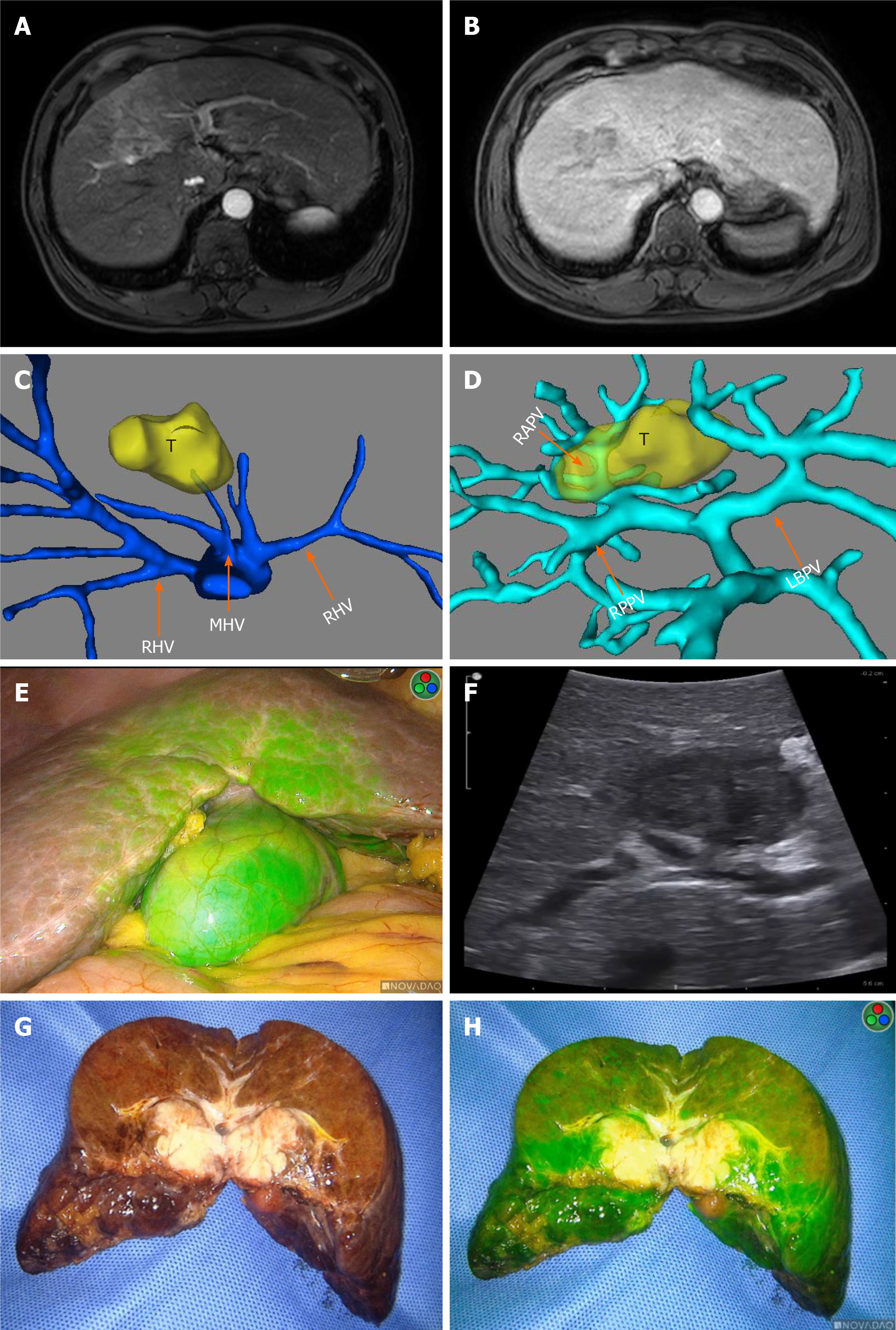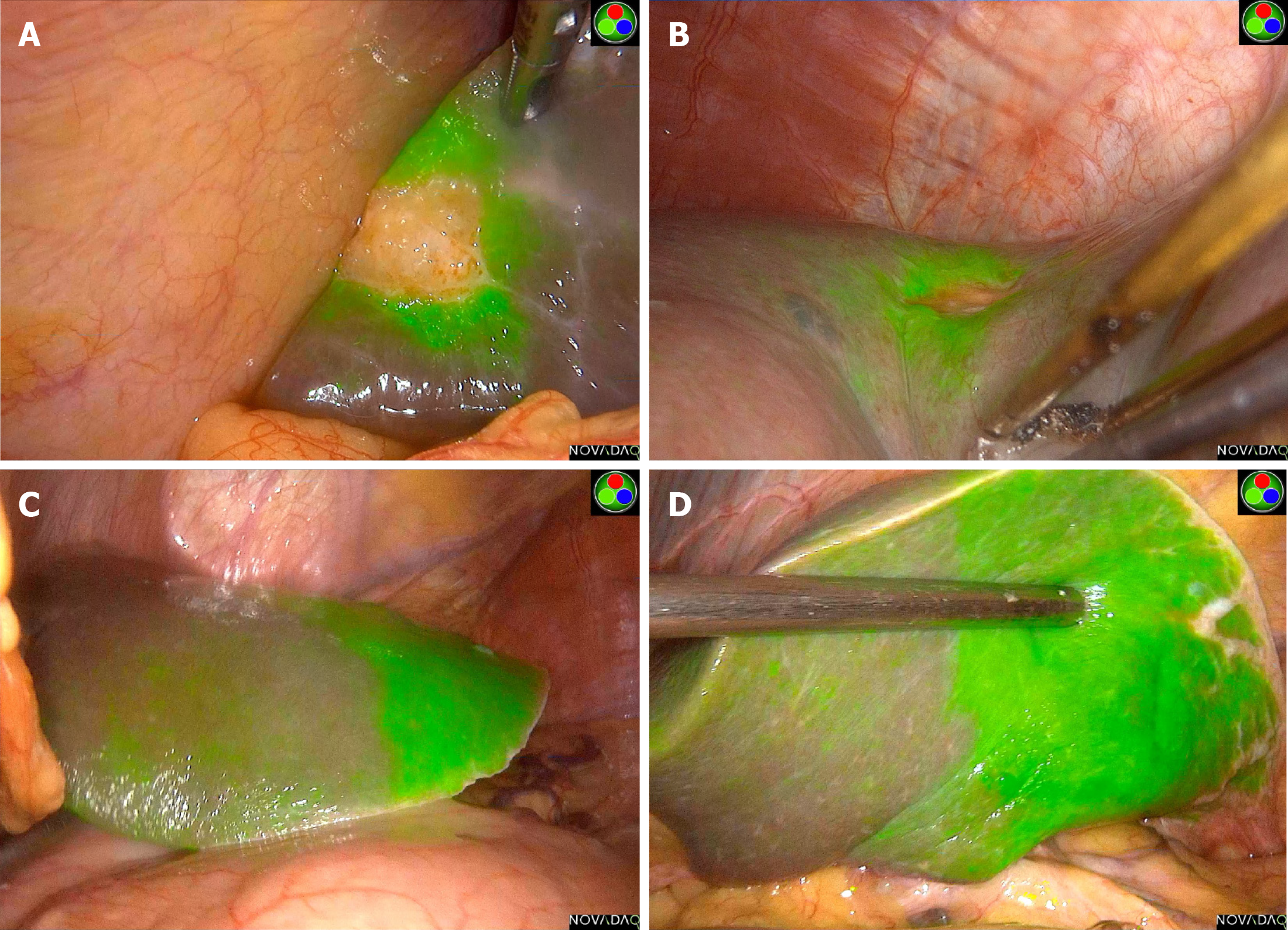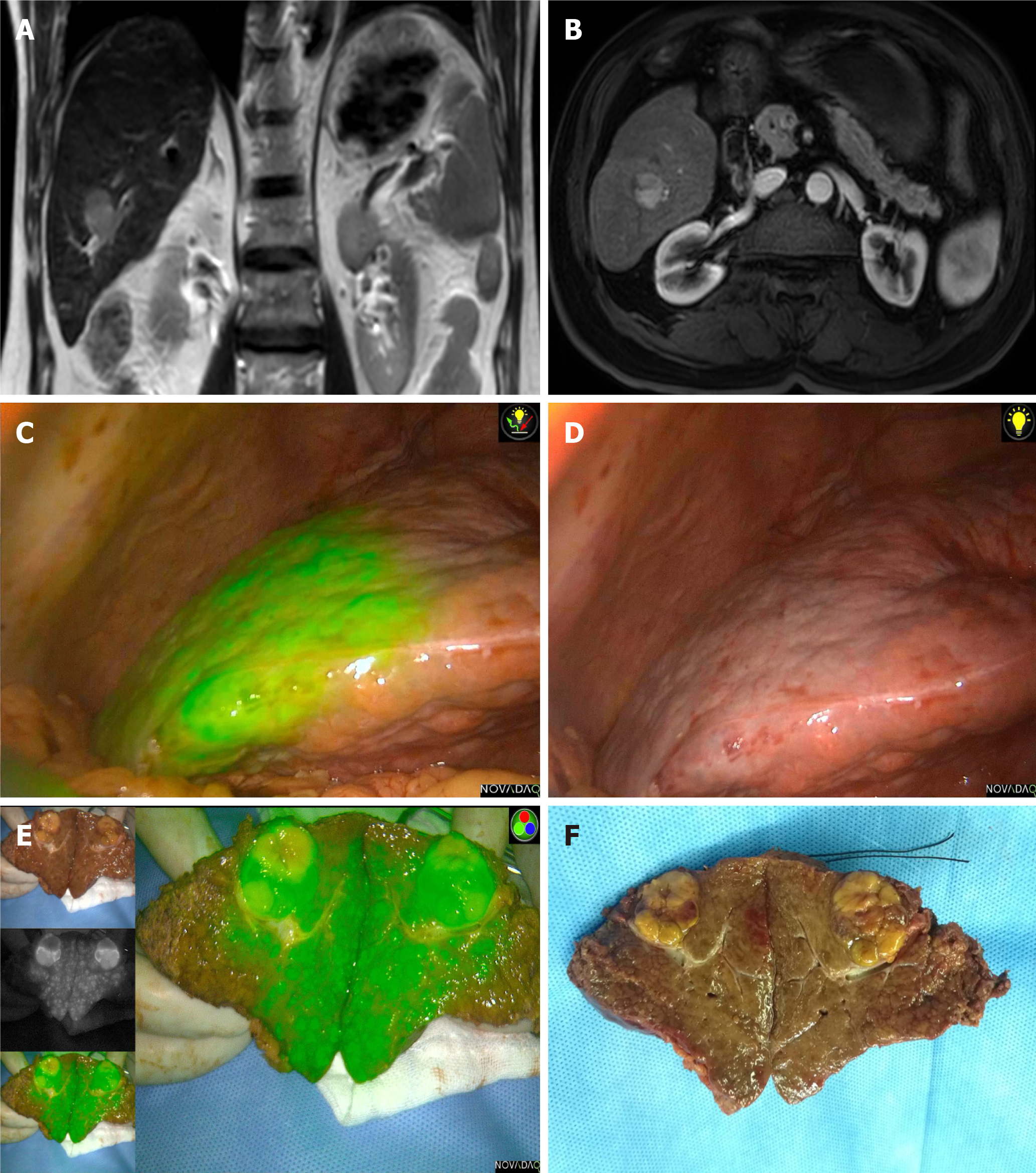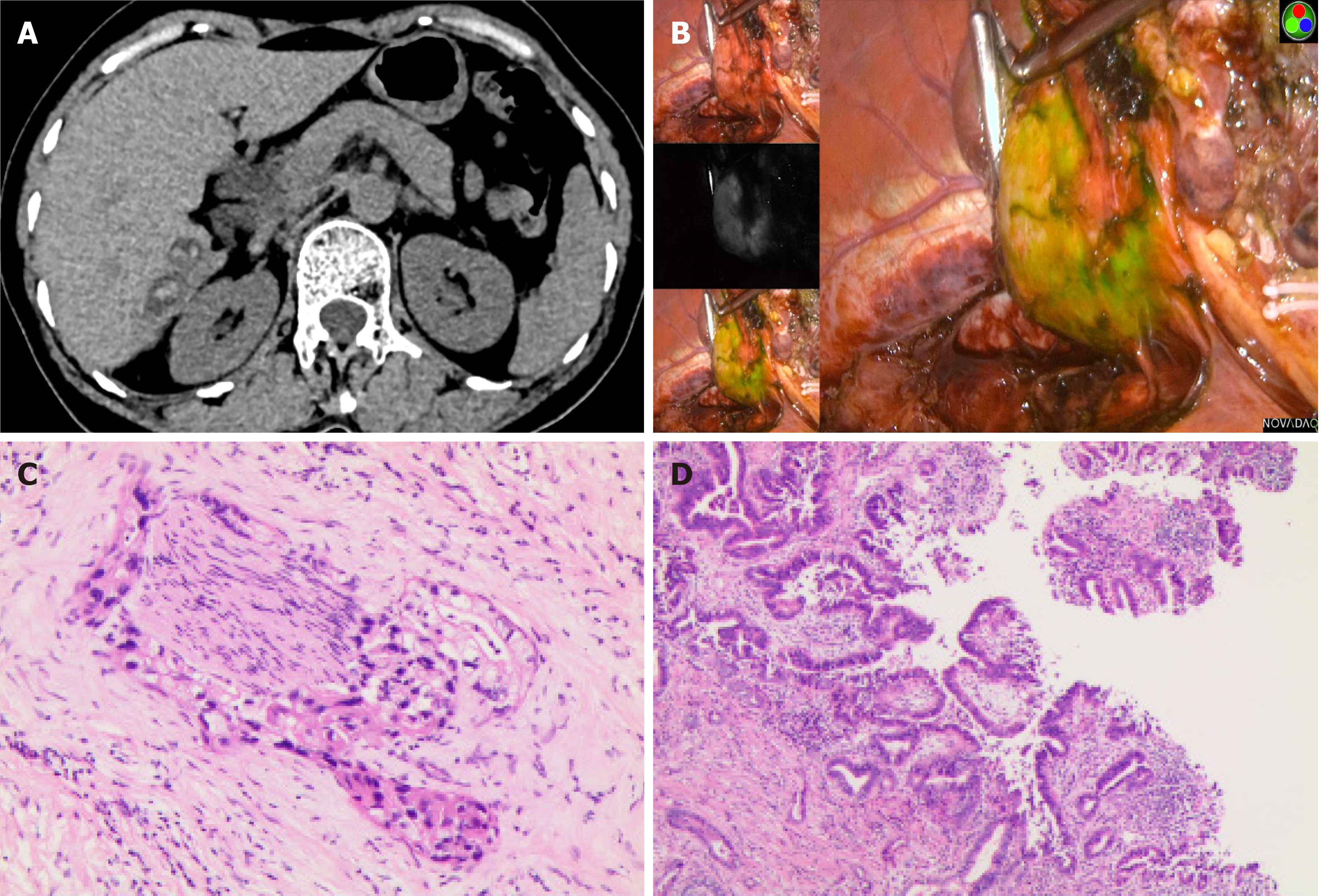Copyright
©The Author(s) 2021.
World J Gastrointest Surg. Mar 27, 2021; 13(3): 323-329
Published online Mar 27, 2021. doi: 10.4240/wjgs.v13.i3.323
Published online Mar 27, 2021. doi: 10.4240/wjgs.v13.i3.323
Figure 1 Imaging examinations of Case 1.
A and B: Preoperative magnetic resonance imaging showed a tumor approximately 35 mm in diameter located at segment V/VIII; C and D: Preoperative 3-dimensional reconstruction of the hepatic vein and portal vein revealed the tumor located at segment V/VIII, invading the right anterior branch of the portal vein; E: Partial fluorescence of segment V; F: Intraoperative ultrasound examination showed that the vein was compressed by the tumor; G and H: Postoperative specimen confirmed that the Glissonian pedicle was invaded by the tumor. T: Tumor; LHV: Left hepatic vein; MHV: Middle hepatic vein; RHV: Right hepatic vein; LBPV: Left branch of portal vein; RPPV: Right posterior branch of portal vein; RAPV: Right anterior branch of portal vein.
Figure 2 Imaging examinations of Case 2.
A: The tumor and fluorescent ring in segment V; B: The tumor and fluorescent ring in segment VIII; C and D: The large area of strong fluorescence of the left lateral lobe of the liver.
Figure 3 Imaging examinations of Case 3.
A and B: Preoperative magnetic resonance imaging examination indicated a hepatocellular carcinoma approximately 20 mm in diameter located at segment VI; C: Fluorescent staining of segment VI; D: The ischemic line on the liver surface after clipping the segment VI pedicle; E and F: Postoperative specimen confirmed the Glissonian pedicle oppressed by the tumor and the stained segment.
Figure 4 Imaging examinations of Case 4.
A: Computed tomography scan indicated multiple intrahepatic stones; B: Partial fluorescence accumulation in segment VI/VII, approximately 5 cm × 4 cm; C and D: Postoperative pathological examination suggested intrahepatic cholangiocarcinoma.
- Citation: Han HW, Shi N, Zou YP, Zhang YP, Lin Y, Yin Z, Jian ZX, Jin HS. Functional anatomical hepatectomy guided by indocyanine green fluorescence imaging in patients with localized cholestasis: Report of four cases. World J Gastrointest Surg 2021; 13(3): 323-329
- URL: https://www.wjgnet.com/1948-9366/full/v13/i3/323.htm
- DOI: https://dx.doi.org/10.4240/wjgs.v13.i3.323












